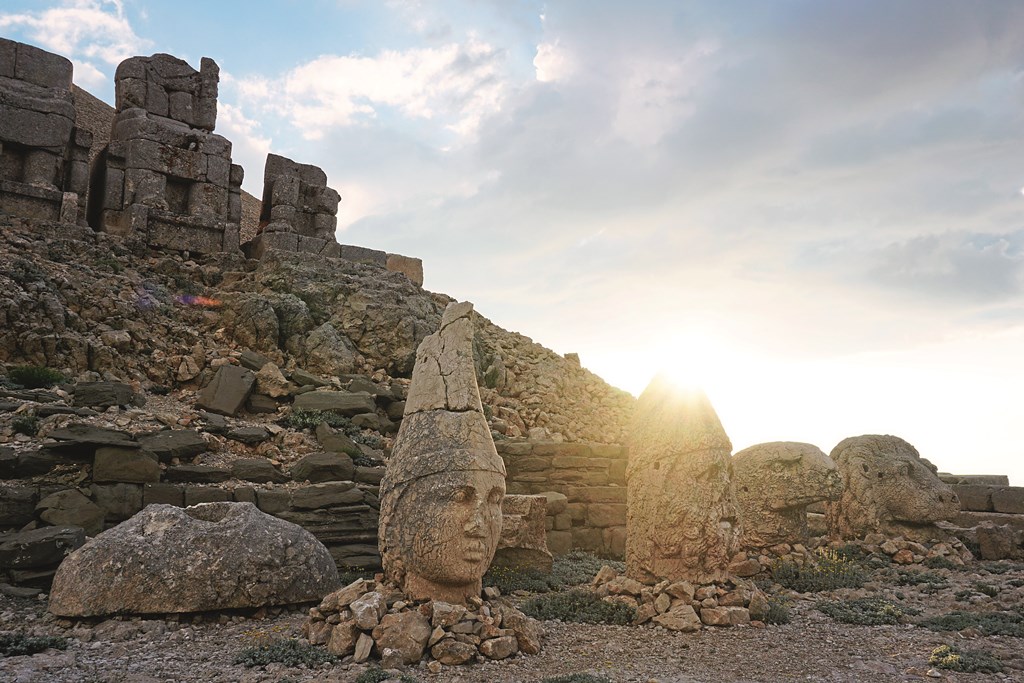An alluring travel destination at the crossroads of Europe and Asia, Turkey often conjures thoughts of popular Istanbul and Ankara. But there’s much more to this fascinating country, as Joanne Tan–Production Editor for The Expat, discovered when she journeyed to the less-travelled southeastern region and found some entirely new kinds of Turkish delights.
Just mention travelling to Turkey to most people, and places like Istanbul, Ankara, Cappadocia, Pamukkale, or the Kalkan beaches will likely spring to mind. For my trip, however, we’d be visiting the lesser-known southeastern part of the country. When relating this to friends and family, I received a lot of blank stares, as if to say, “What is there to see or do in that part of Turkey?”
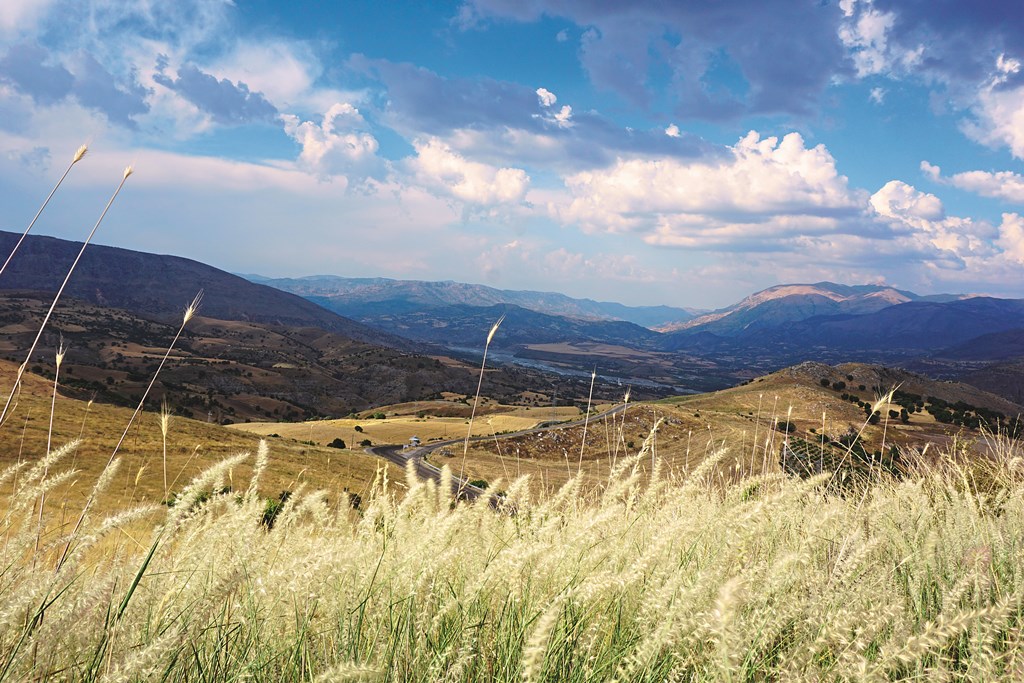
It was my first time in Turkey. Visiting Istanbul’s iconic landmarks such as Hagia Sophia, the Sultan Ahmed Mosque (popularly known as the Blue Mosque), Topkapi Palace, and the Basilica Cistern on my first day became an introduction to this unique country straddling both the Asian and European continents, and exhibiting characteristics of each. I was immediately intrigued by its rich culture, architecture, and history, and ready to see more. At the crack of dawn on the next day, we took a short flight on Turkish Airlines to Diyarbakir, a city situated along the upper Tigris River, and began in earnest our journey along what is known as the Cradle of Civilisation.
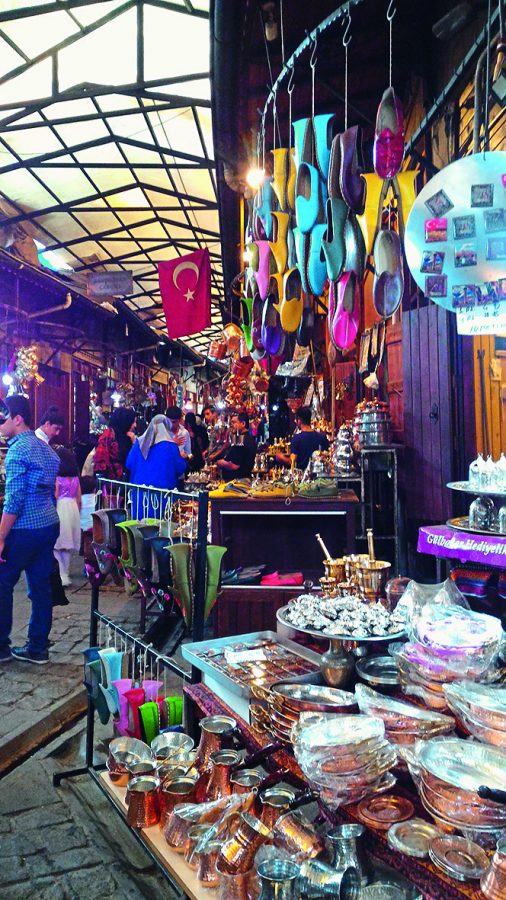
Exploring Diyarbakir
Upon arrival, we headed to Hasan Paşa Hani in the old city of Diyarbakir for breakfast. Hasan Paşa Hani, built in 1575, was a caravanserai, a place where travellers, merchants, and their animals rest and recover from the day’s journey.
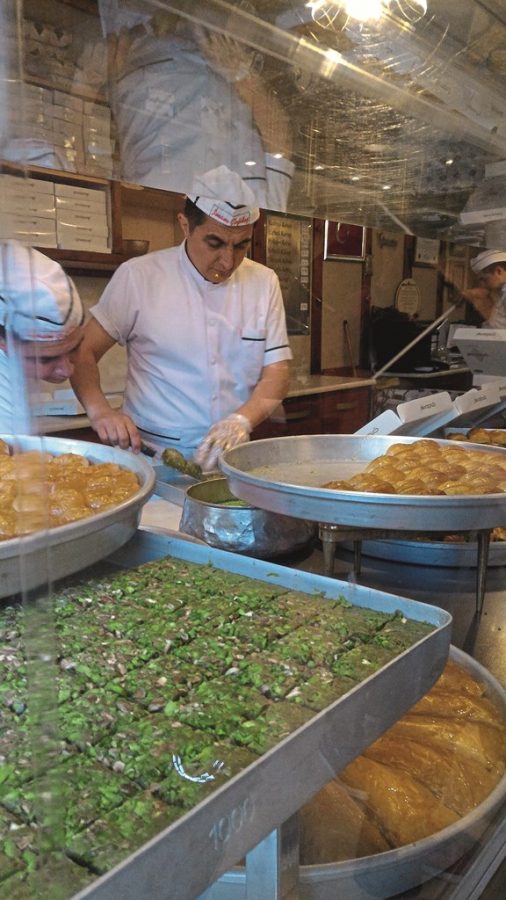
As we walked in, enjoying the cool early morning air, the old city welcomed us into its open centre courtyard. Shops were just opening and locals were engaged in their morning conversations over a cup of çay (pronounced as chai, or otherwise known as Turkish tea). Upstairs, people were seated along the terrace, enjoying breakfast.
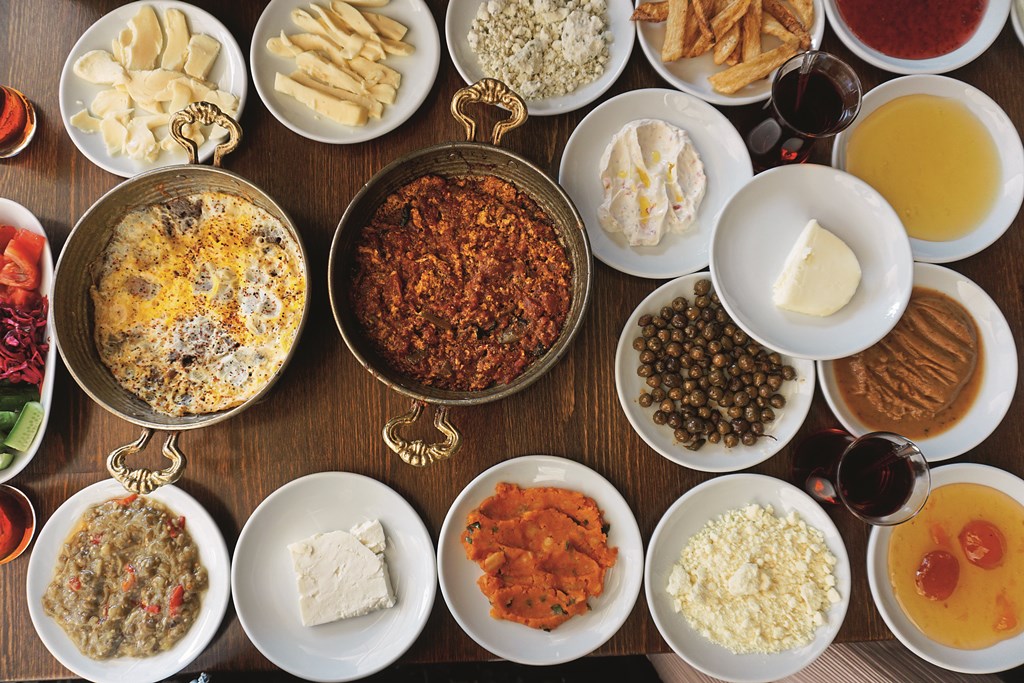
We soaked in the atmosphere while admiring the façade around its centre courtyard built from alternating black basalt and white limestone, and we were served kahvalti, a traditional Turkish breakfast. In less than a minute, our table was filled with a variety of dishes: yogurt, cheese, kaymak (clotted cream), honey, jam, olives, tomatoes, dried apricots, menemen (scrambled eggs with vegetables), bread – lots of it – and of course, çay. It was a most impressive spread to begin our day!
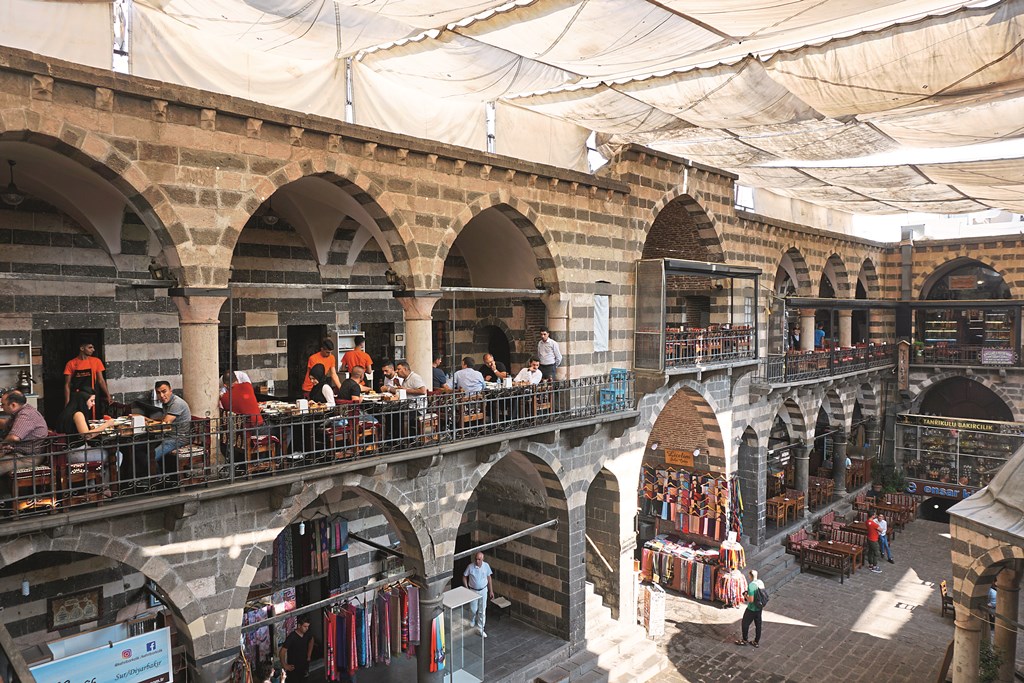
Following breakfast, we strolled down the streets of the old city, visited the Great Mosque of Diyarbakir and the house of famous Turkish poet Cahit Sitki Taranci. Before leaving Diyarbakir, we stopped at the Ten-Eyed Bridge, also known as the Dicle Bridge, part of a UNESCO World Heritage site comprising the green Hevsel Garden and Diyarbakir Fortress. From here, were able to see a section of the 5.8-km Diyarbakir City Wall, the second-widest and longest defensive wall in the world after the Great Wall of China. Beneath the Ten-Eyed Bridge flows the Tigris River, a critically important river in Mesopotamian history.
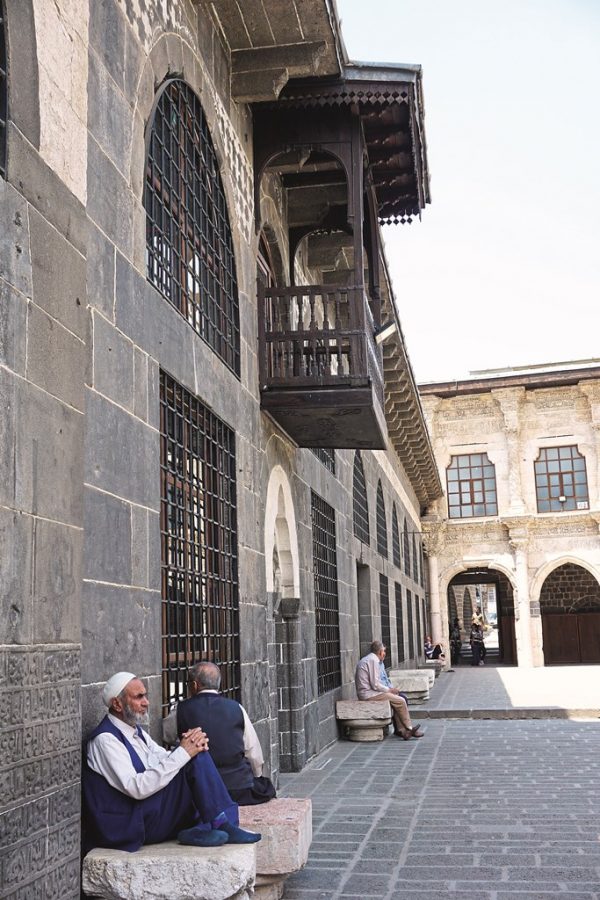
As our bus left Diyarbakir, the scenery and sights of the Tigris River accompanied us along the way. We made a brief photo stop at Hasankeyf, an ancient settlement located along the Tigris, before heading to Şanlıurfa for the night.
Touring the Southeast
Şanlıurfa, locally known as Urfa, is an important pilgrimage destination, and is itself an open museum where, throughout the province, important archaeological sites and ancient cities are located. Here, square buildings with flat roofs built on traditional yellow stones dot the landscape. Interestingly, Şanlıurfa is believed to be the birthplace of the Prophet Abraham, a prominent figure in Judaism, Christianity, and Islam.
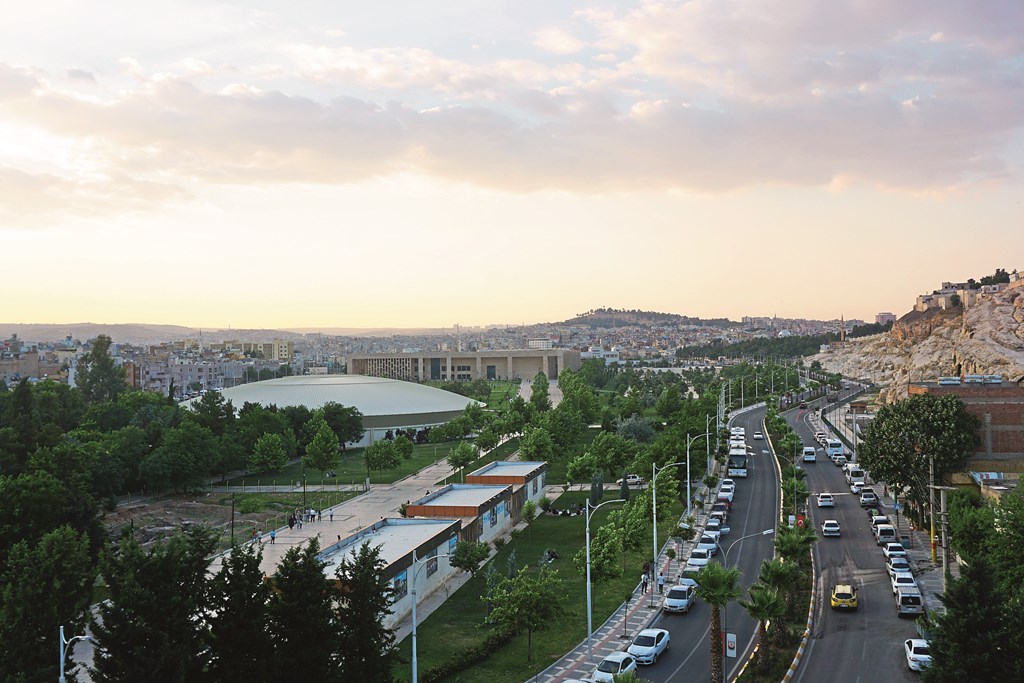
Legend has it that when Abraham remonstrated with King Nimrod, he was ordered to be burned alive. However, God intervened, and turned fire into water, and embers to fish. Today, this sacred place is known as Balıklıgöl (the Sacred Fish Ponds), where small lakes are shaded by a carefully manicured park. As the day drew to a close and the sky grew darker, the ezan from nearby Halil-ur Rahman and Rizvaniye Vakfi Mosques could be heard in the background.
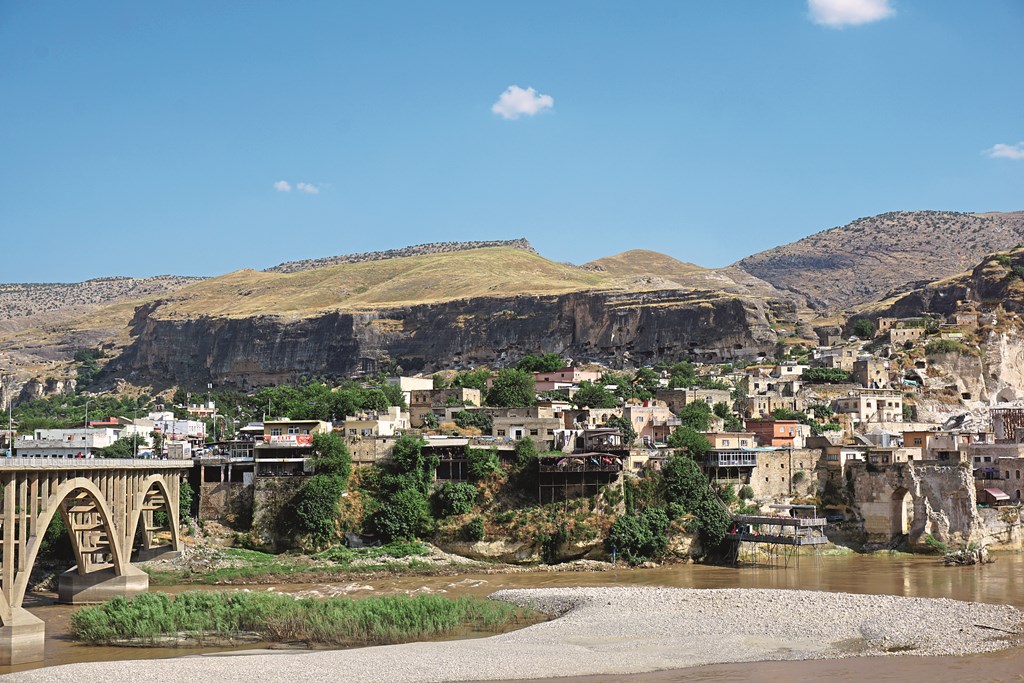
The next morning, the sun shone brightly across the open plains. It was summer in Turkey, and the weather on the semi-arid continental plateau of southeastern Turkey can be unforgivably hot. Nevertheless, despite the promise of a sizzling day ahead, I was excited to stand on the grounds of what is believed to be the oldest temple in the world, Göbekli Tepe. Geographically, Göbekli Tepe is located in upper Mesopotamia, a historical region of West Asia within the greater Tigris and Euphrates river system. It is part of the Fertile Crescent, the great land where ancient civilisation began.
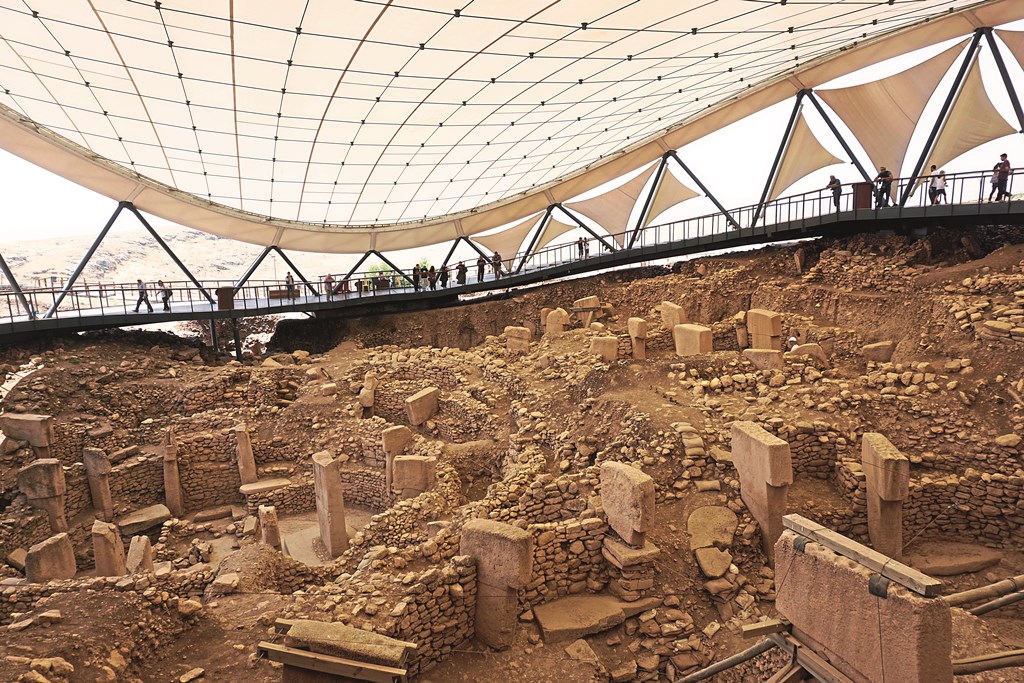
With a gently rounded top that rises some 50 feet above the surrounding landscape, Göbekli Tepe (meaning ‘Potbelly Hill’ in Turkish) was first discovered in the 1960s. However, it wasn’t until 1994, when the site attracted the attention of Klaus Schmidt, a German archaeologist who was studying prehistoric sites in the region at the time, that excavation began taking place. Through Schmidt’s efforts, the history of human civilisation was rewritten. Dating as far back as 12,000 years, Göbekli Tepe predates Stonehenge by 6,000 years, and the Egyptian Pyramids by 7,000 years.
To date, eight megalithic structures have been excavated, and, according to archaeologists, this has barely scratched the surface of a temple area some 300m in diameter. From the viewing platform overlooking what is believed to be the world’s oldest temple, I was humbled by the scale and architectural ability of the people who lived so many centuries before me.
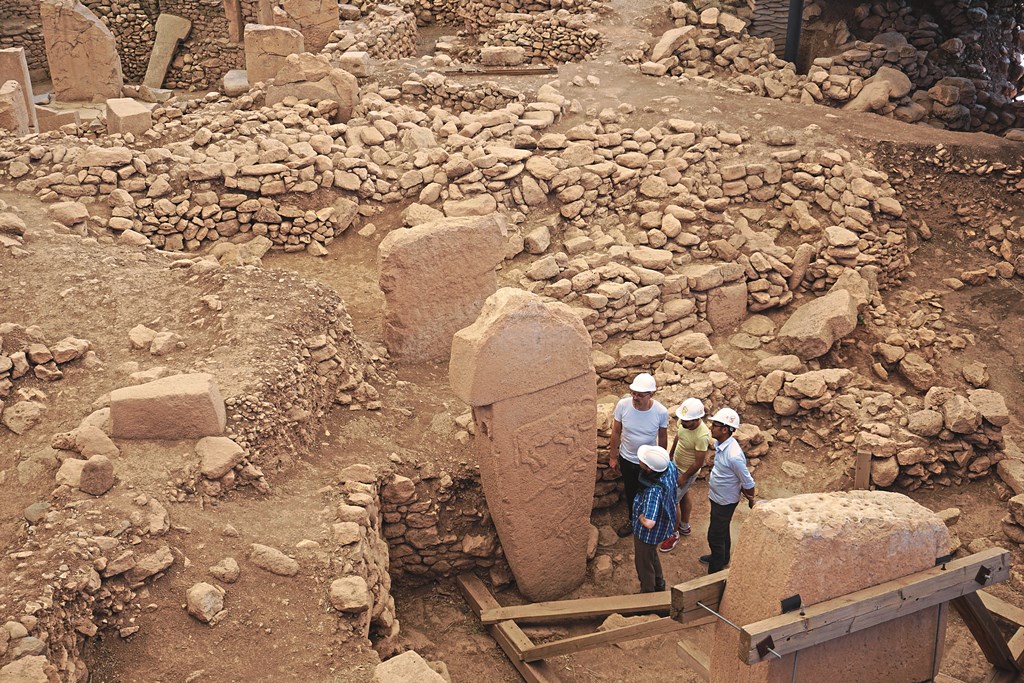
Circles of T-shaped pillars here were formed by the carving of limestone blocks found around the area, then carefully transported to build the temples. Each circle is arranged by smaller pillars surrounding two large T-shaped pillars in the centre. The builders of Göbekli Tepe were believed to be from the pre-pottery Neolithic period, who were still hunter-gatherers. As there were no signs of settlements nearby, archaeologists are convinced that people travelled for many miles to Göbekli Tepe – perhaps to worship, to perform ritual burials, or even for social gatherings.
Our guide pointed to the carvings on the pillars. Cranes, foxes, spiders, snakes, and lions were some of the animals that could be seen on the different stone pillars. More than just artistic decorations, these animal carvings are believed to represent power, wisdom, and strength, characteristics worshipped by the people who built Göbekli Tepe. The hands carved on the centre pillars might depict humans, gods, or some higher being; to this date, no one knows for sure. Why was a site of this scale built 12,000 years ago, and subsequently covered a thousand years afterwards? What do the carvings and symbols actually mean? With excavations still taking place, and answers slowly emerging, I wish that one day the mysteries of this ancient human civilisation will be fully unlocked.
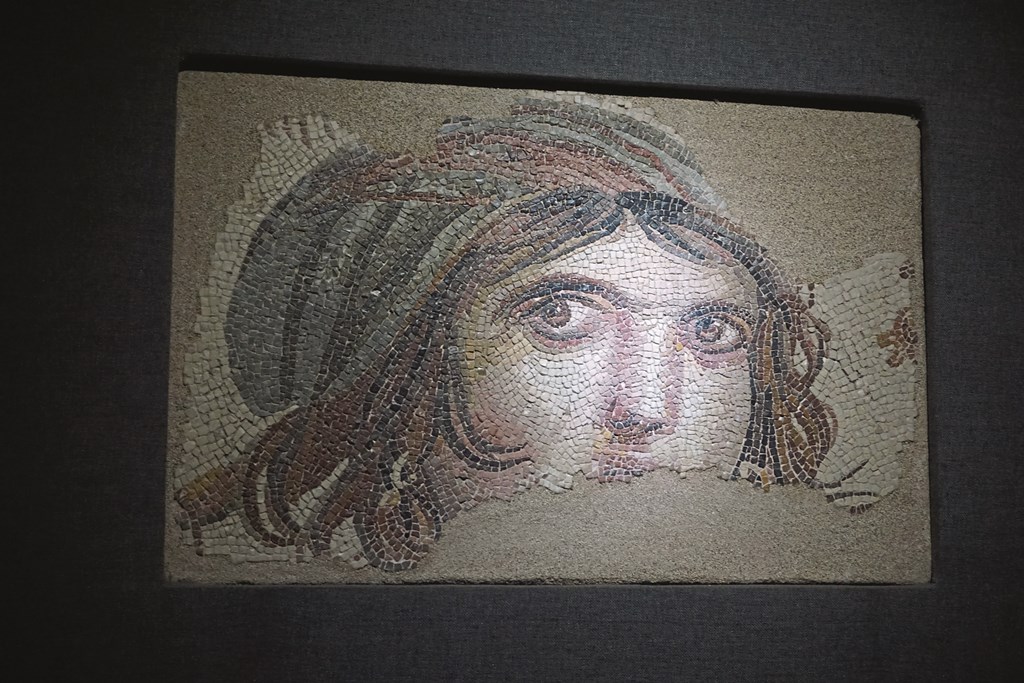
On our last day in Şanlıurfa , we visited Şanlıurfa Museum, a modern archaeological museum exhibiting findings from Şanlıurfa and the surrounding areas. The museum has been carefully curated, taking visitors through the Paleolithic, Neolithic, Chalcolithic, Bronze, and Iron Ages, ending with relics of the Islamic period. Across Şanlıurfa Museum, we walked into the Haleplibahçe Mosaic Museum. The mosaics here were found at an ancient Roman villa in Şanlıurfa, which dates back to the fourth century BCE. My favourite piece was one which depicted a group of hunting Amazon queens, highlighting the strength and courage of women in Greek mythology.
Memorable Moments
As we travelled by bus to Mount Nemrut to take in the sunset, vistas of endless flat open terrain were exchanged for more mountainous landscapes. Glimpses of the Taurus mountain range came closer to sight. Our bus took us as far as it could, after which we had to make the last few hundred meters’ ascent to the peak on foot. It was a comfortable 30 minutes’ walk, though admittedly, I took longer than required, pausing every now and then to admire the unique vegetation along the way.
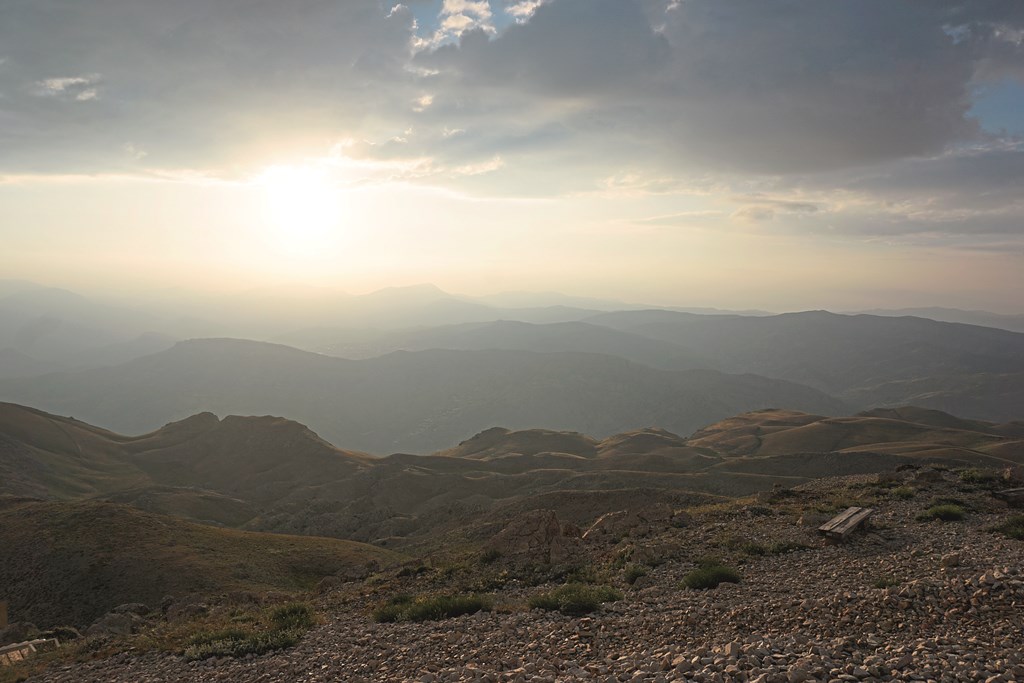
Mount Nemrut was the chosen resting place of King Antiochus I of the Commagene Kingdom and it was easy to see why he considered this a special place. Sitting 2,132m above sea level, five huge limestone statues of gods faced outwards from the tumulus on both the east and west terraces. On both ends, lion and eagle statues serve as sentinels. For centuries, the immense statues have guarded the tumulus, overlooking the spectacular view of the Taurus mountain range. No longer standing in their original positions, however, the colossal stone heads of these statues have fallen to the ground, and are now scattered on the terraces. This was a mesmerising, evocative place.
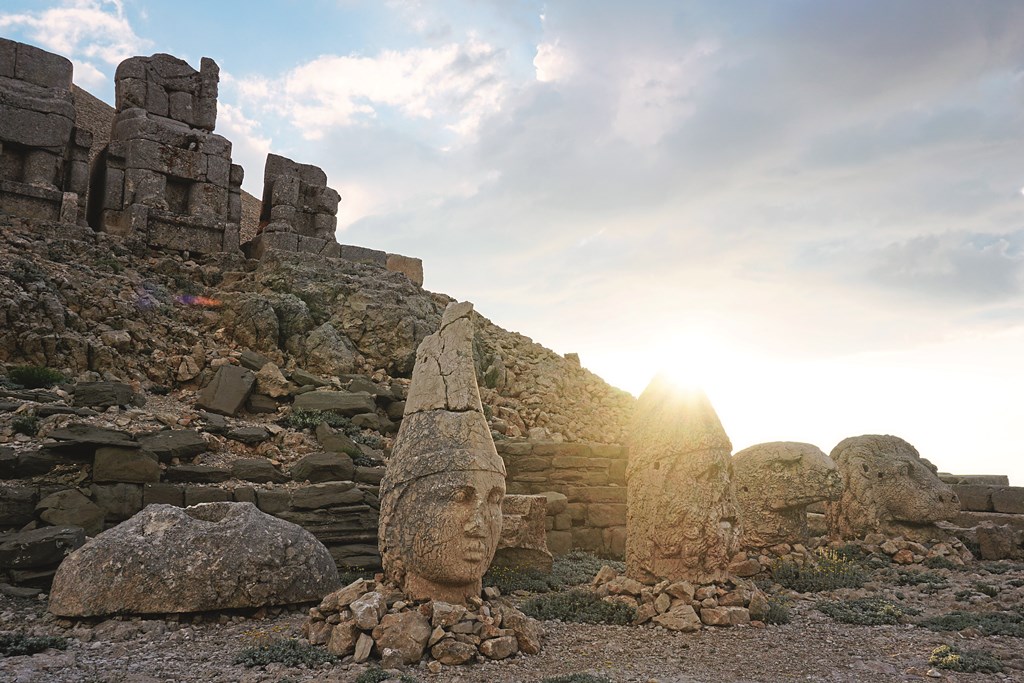
The warm rays of the setting sun illuminated the faces of the fallen statues on the west terrace, giving a mystical feeling to this burial ground. I enjoyed the breath taking sunset view while a cool breeze brushed past my face. Shadows of the mountainous range in front of me slowly faded into darker shades. As the sun slunk below the horizon, I joined the rest of the group, snapped some memorable photos, and we happily made our descent together.
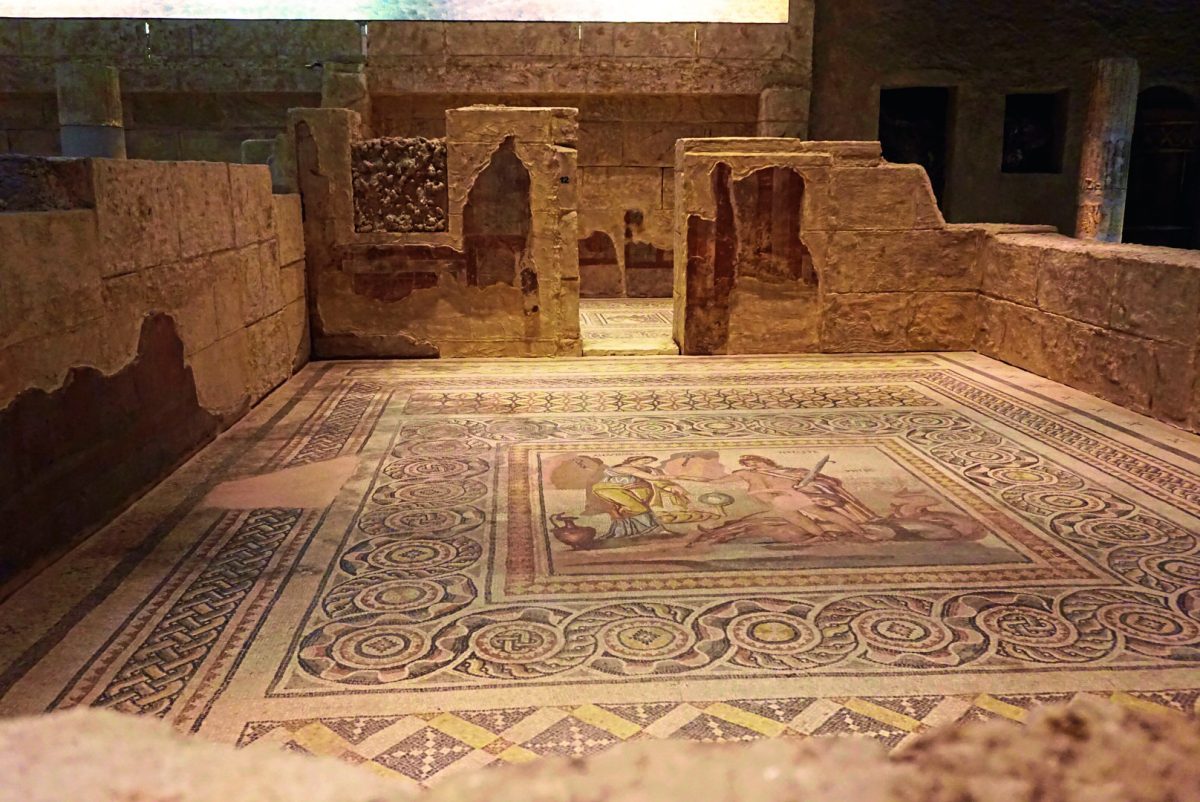
On our last day, we went to Gaziantep to visit Gaziantep Zeugma Mosaic Museum, the largest mosaic museum in the world, specifically for the mysterious Gypsy Girl. Being in a land well-known for its pistachios and baklava (a sweet pastry made with honey and nuts), we naturally managed to savour this popular dessert at İmam Çağdaş Kebap ve Baklava. This establishment apparently serves one of the best baklavas in the world and I couldn’t disagree – the flaky pastry was rich and nutty, but not overpowered by sweetness. It was a fitting end to my trip to southeastern Turkey.
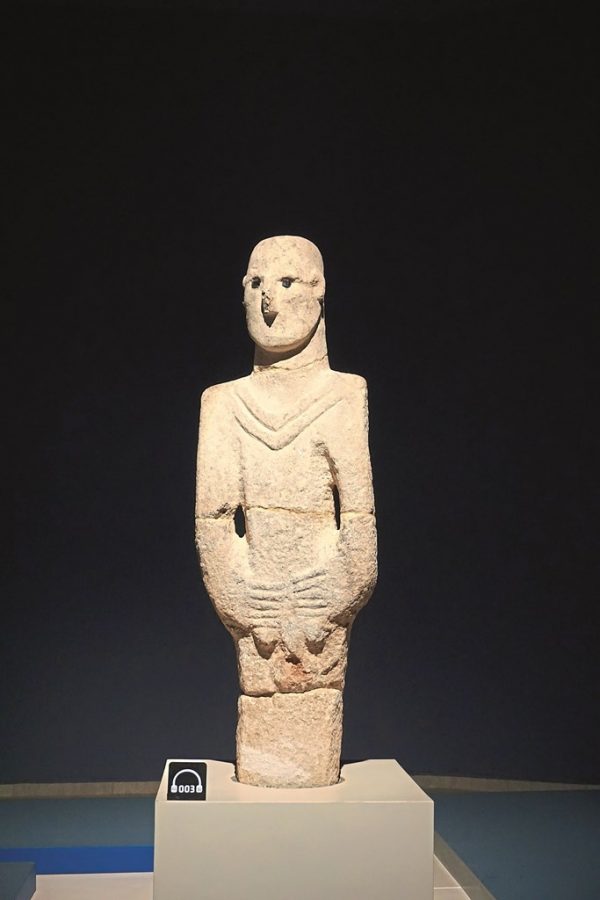
The rich history of Turkey that I experienced on this trip has deepened my appreciation for the progress and development of human civilisation. From Diyarbakir to Göbekli Tepe to Mount Nemrut, the open museums of Southeast Turkey proved to be an amazing, unforgettable experience. It was my first visit to Turkey, but will surely not be the last.
Travel File
Among the world’s most well-connected airlines, Turkish Airlines flies internationally to over 200 cities globally, and to over 50 domestic destinations in Turkey. The airline operates direct daily flights between Kuala Lumpur International Airport to Turkey’s new airport, the Istanbul Airport. For more information, visit turkishairlines.com.
Visa requirements, currency, climate, destinations, and all the information you need about Turkey are available at turkeytourism.com.my.
"ExpatGo welcomes and encourages comments, input, and divergent opinions. However, we kindly request that you use suitable language in your comments, and refrain from any sort of personal attack, hate speech, or disparaging rhetoric. Comments not in line with this are subject to removal from the site. "


